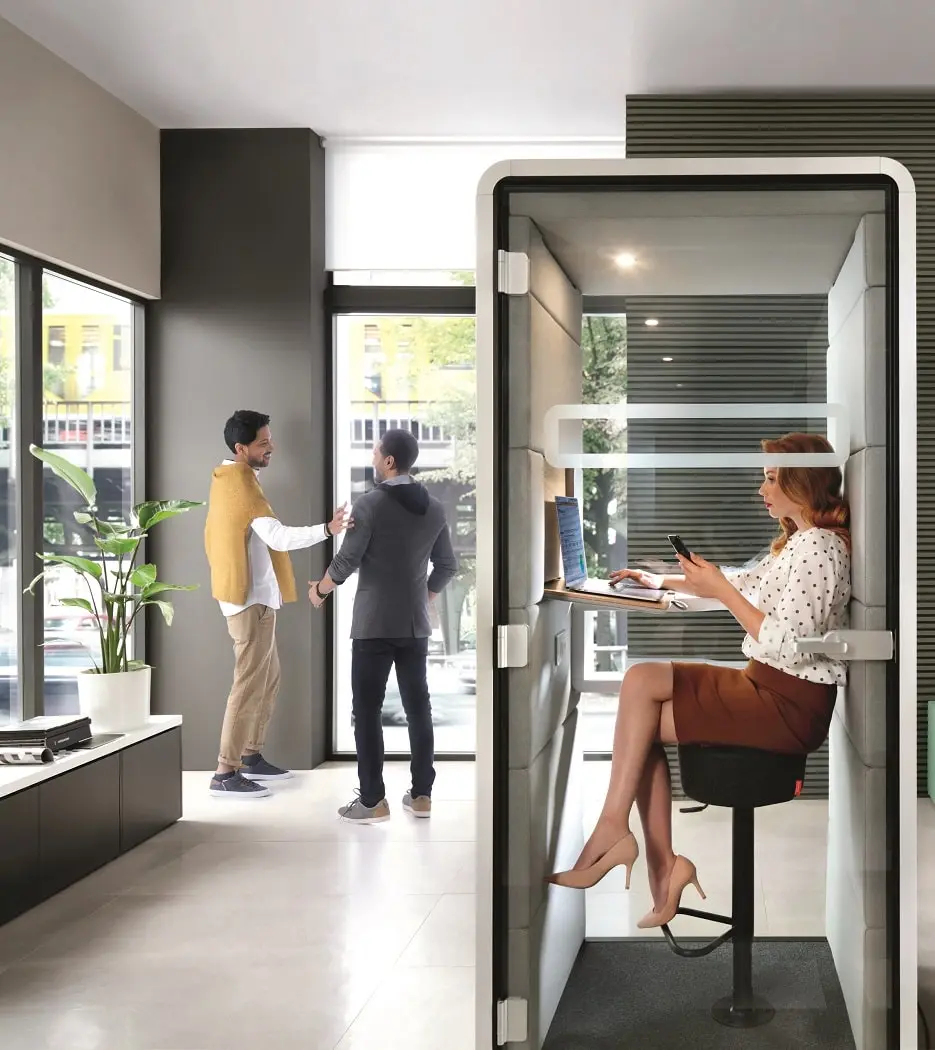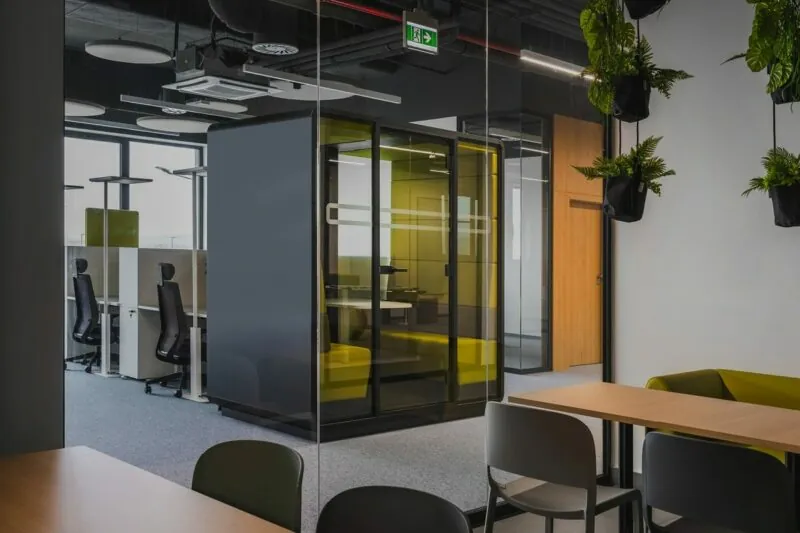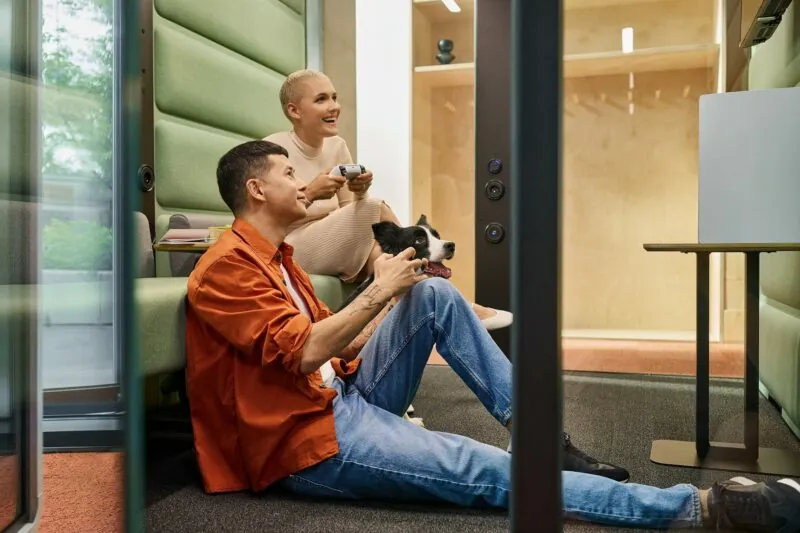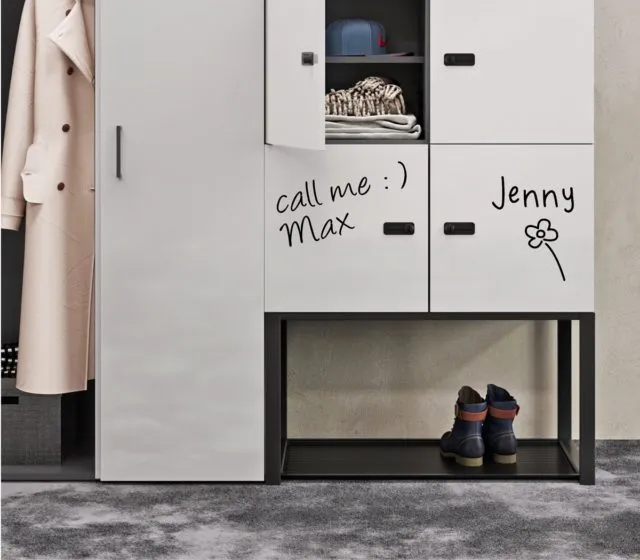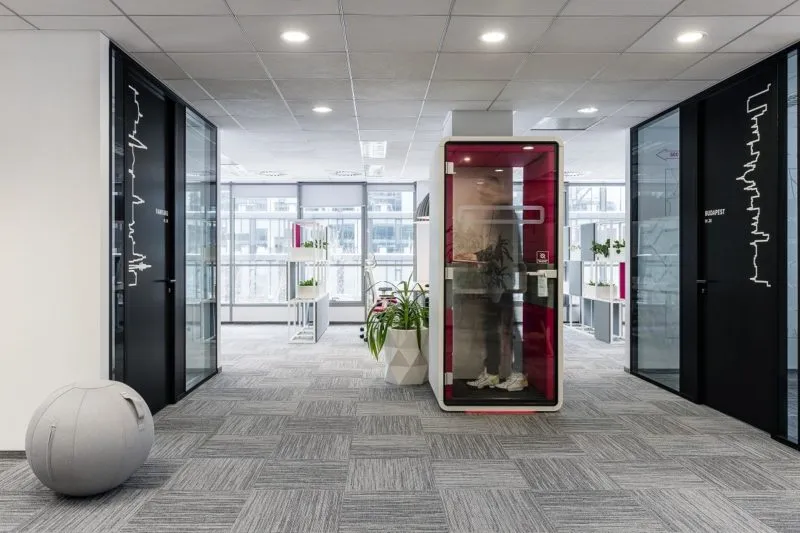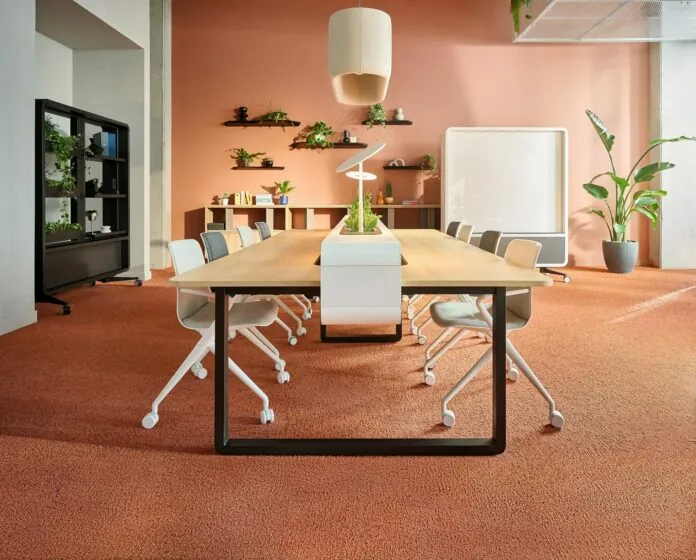Preventing sensory overload in open workspaces
- Posted on: 15 February 2024
- By: Hushoffice Team
Sensory overload is a result of an excessive number of stimuli bombarding your senses. One of its major indicators is difficulty in functioning in your workspace, including clouded cognition, feelings of discomfort or anxiety. It’s a built-in risk of open-plan offices. Fortunately, acoustic pods and booths can help by providing a quiet retreat, thus helping to maintain balance so necessary for employee well-being.
Sensory overload in open workspaces
Sensory overload is a result of an excessive number of stimuli that employees experience in their surroundings. In some contexts, one of the five senses can be overloaded, in others, multiple senses may be simultaneously affected. In this respect open workspaces are especially challenging for workers with ADHD, autism, PTSD or other conditions connected with the way employees respond to sensory stimuli. Thus, to create a universal, inclusive, and accessible working environment, you need to design your workspace with such groups in mind.
Prevalent sources of overstimulation in the workspace are: office noise, harsh lighting, heavy scents of perfume, cleaning products or food, excessive visual distractions, and disturbances in the surrounding area. However, it is office noise that is the most detrimental to employee well-being and cognitive functions.
The most effective way to reduce sensory overload is to offer your senses a break from overwhelming stimuli. Acoustic office pods address this issue by providing employees with private, calm, self-contained spaces to zone out and recharge.
What does sensory overload in the workspace refer to?
Sensory overload is a consequence of one or more senses being overwhelmed by an excessive number of stimuli. Maybe, a team member’s cologne is too strong, or the working environment is just too noisy, or electronic devices continuously ping and beep. Of course, individual sensitivity can worsen sensory overload, and excessive input (for example, visual or auditory) can contribute to its escalation.
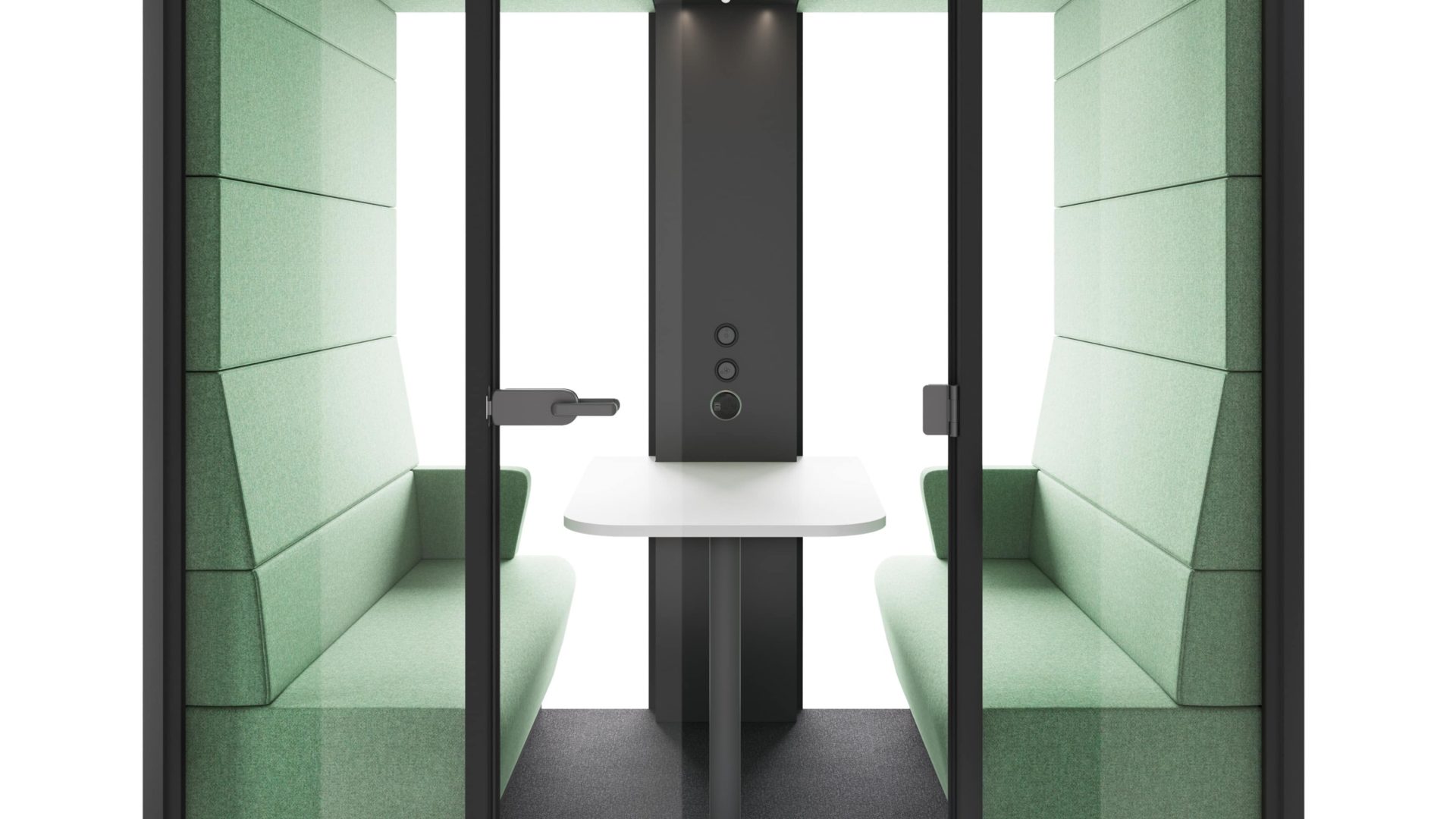
To solve the problem of sensory overload, employers should try to create a sensory-friendly working environment, or in other words, a relatively peaceful, silent workspace that grants employees autonomy over their workplace. This can be achieved by providing relaxation areas, such as Hushoffice acoustic pods, soundproofing solutions, adjustable lighting as well as allowing for more freedom in choosing the most optimal working arrangements
– says Mateusz Barczyk, Senior Brand Manager, Hushoffice.
What impact does sensory overload have on workers? In one word: negative.
Senses matter a lot. We use them to analyse and safely navigate the world, comprehending the information from the surroundings via sight, hearing, smell, taste, and touch. If the number of stimuli exceeds our limits, we are not able to make sense of this information, which leads to the feeling of insecurity. That’s why sensory overload is a threat to our well-being and productivity.
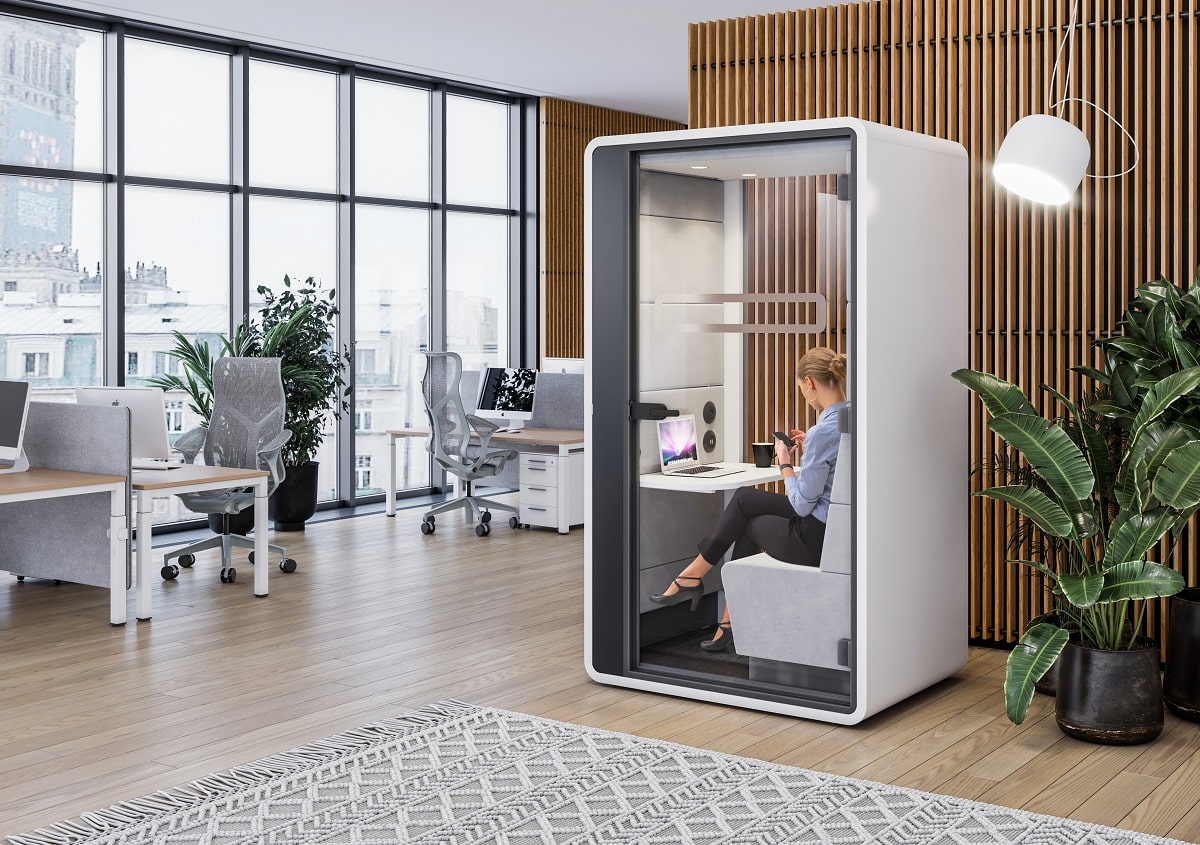
Stress. Prolonged exposure to an excessive number of stimuli may contribute to increased stress levels, leading to anxiety and tension that directly affects employees’ focus and performance.
Hindered focus. While overstimulated, employees may find it difficult to focus on their task, no matter how determined they are. While every brain has its own limited data processing capability, constant disturbances can hinder its cognitive functions, negatively impacting productivity.
Fatigue. To be able to deal with surrounding activity, employees need to devote extra mental and emotional energy. Workers in busy workspaces may be mentally drained at the end of their working day unless they are provided with quiet relaxation areas for temporary breaks.
Irritability. Being barraged by a continuous flow of surrounding stimuli is a recipe for irritation. And irritation inevitably impacts personal interactions, ruining the team spirit and overall atmosphere.
Absenteeism. Workers struggling with excessive sensory stimuli in their workplace are more likely to take sick leaves. Feeling desperate, they may use any opportunity to take a break from the overwhelming environment, which may result in an increased level of absenteeism or mental disengagement.
What sources of sensory overload do you need to be particularly cautious of?
Backdrop noise. Visual stimuli from visitors to foot traffic to cluttered space. Bright, strong lighting. Variations in temperature. Continuous notifications. Unpleasant scents. Crowded spaces. Ask your employees to identify the most disruptive elements in their working environment
Sensory overload is a result of our brain’s struggle with interpreting and organising an excessive amount of sensory data. The overload is information to our body that it should avoid certain stimuli to be able to deal with them. In essence, the brain generates symptoms, such as anxiety, to prompt the body to isolate itself urgently, preserving its capacity to process information effectively. So, feelings of discomfort or even panic are natural, well-working mechanisms enabling us to find balance in the environment. That’s why it is crucial to offer workers self-contained, private spaces, such as Hushoffice pods, to allow them to take five when the indicators of imbalance appear. Whenever necessary, a pod can be used as a quiet retreat, respecting your cognitive capacity and enabling you to maintain your inner balance
– adds Mateusz Barczyk, Senior Brand Manager, Hushoffice.
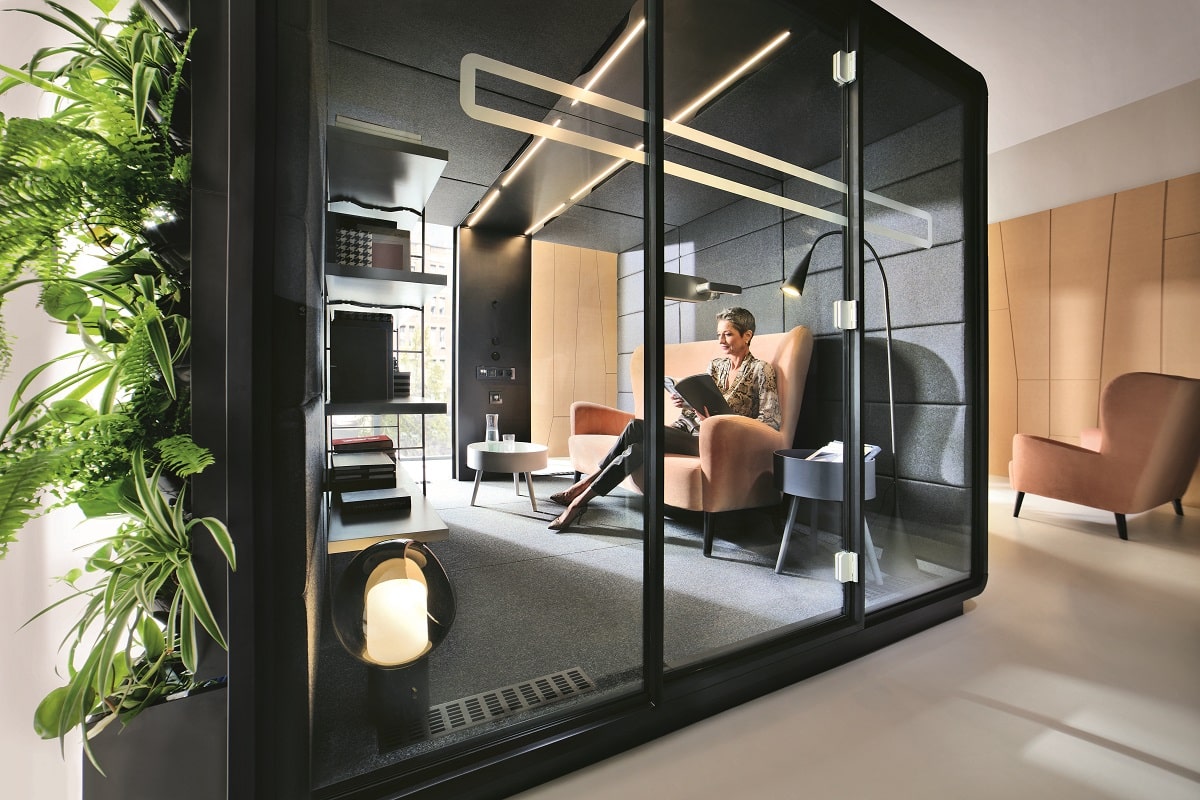
What are the most typical symptoms of sensory overload?
Difficulty focusing caused by competing stimuli. Excessive irritability. Nervousness. Discomfort. Tension. Increased stress levels. Anxiety. Apprehension. While each of these symptoms may be unsettling, they actually function as metaphorical engine lights, signalling disharmony that requires attention.
The concept behind intelligent office design involves a deep understanding of how the surrounding environment impacts our thoughts and emotions. Eventually, human potential can be either constrained or enhanced by the physical environment. This can be observed when employees grapple with fatigue induced by the hustle and bustle of the office. Or maybe, they appear moody and irritable. Maybe, they get anxious more often while striving to meet deadlines. Maybe, they constantly struggle to maintain focus on their task. In all these cases, the office environment has a direct impact on employees. And in all these cases, creating a calmer, more peaceful environment can definitely deliver positive results
– explains Mateusz Barczyk, Senior Brand Manager, Hushoffice.
Acoustic pods address the problem of sensory overload in open workspaces.
The most effective way to mitigate sensory overload is to reduce the number of stimuli in your surroundings. That’s why medical professionals advise workers experiencing overload to retreat to calm, secure spaces within the office. Silent, private, self-contained acoustic pods are spot on.
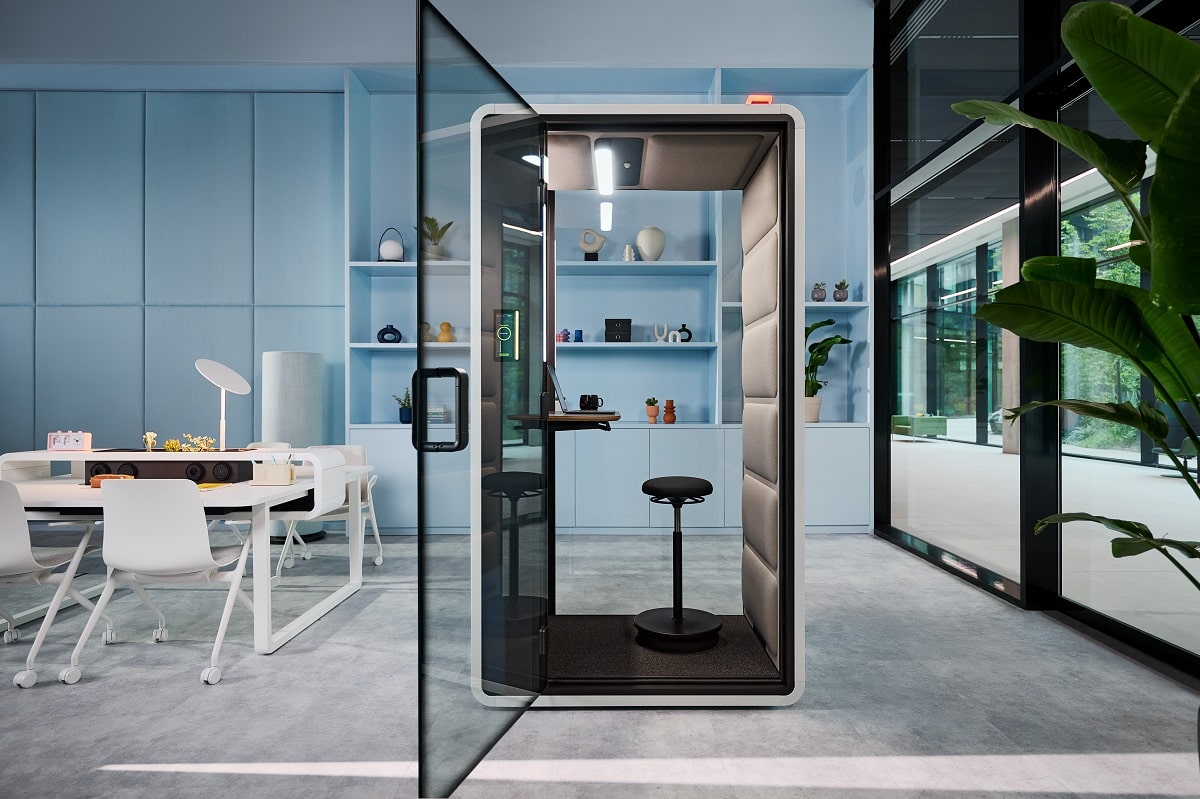
Acoustic office pods help mitigate overload by minimising sensory stimuli.
Pods are self-contained, private, controlled environments with a reduced number of auditory, visual, and olfactory stimuli. They are silent retreats, offering workers an escape from the bustling and draining open workspace.
What location of acoustic pods ensures the most optimal environment for sensory breaks?
To ensure seclusion, the best idea is to locate pods in remote spaces such as hidden corners or corridors. You may also place one pod next to the window to provide a view of the outdoors, additionally allowing employees to benefit from a virtual nature break.
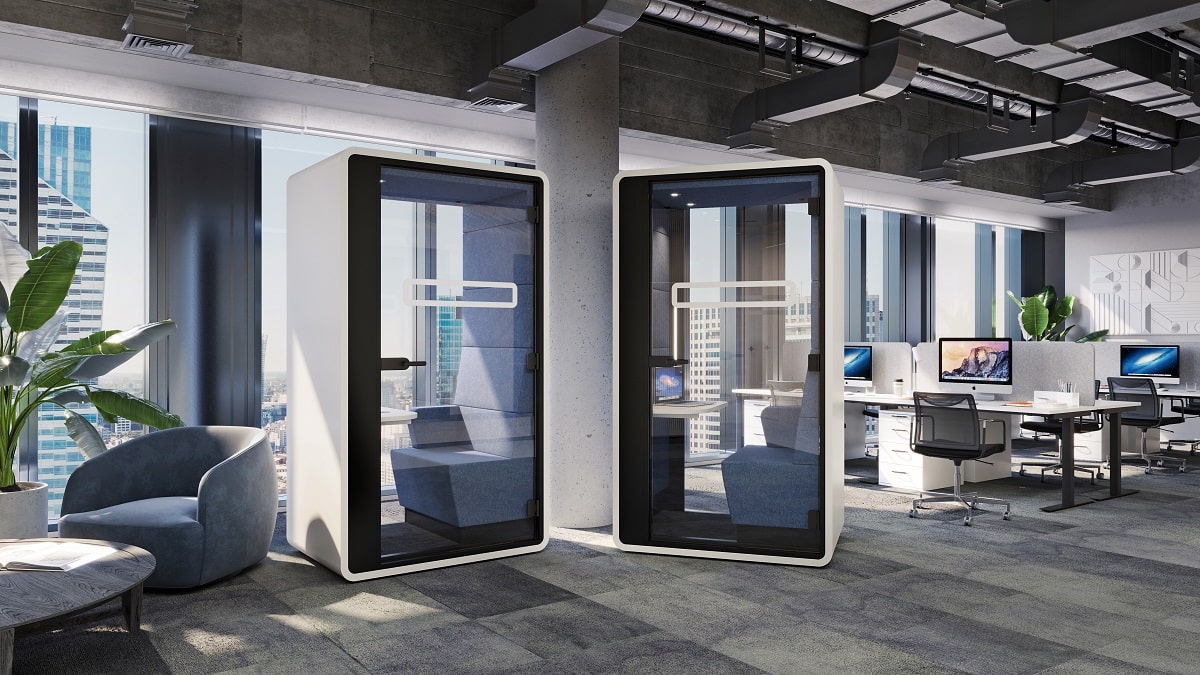
Aesthetically, Hushoffice pods combine simplicity with sophistication. Functionally, their strong point is convenience. With their compact, self-contained design, they are perfect for any office space regardless of its size. Their minimalistic, elegant appearance is completed by soft-upholstered interior panels and cosy furniture creating an inviting, peaceful atmosphere. Once you enter the pod, you can sit comfortably, relax and focus on your task at hand. Customisable lighting enables users to create the desired atmosphere, granting them greater autonomy over their immediate space. Additionally, all pods in the line offer personalisation options such as choosing colours for the exterior and interior details. To sum up, acoustic pods provide an effective solution for a number of issues, including workspace noise, privacy concerns, and employee comfort
– says Mateusz Barczyk, Senior Brand Manager, Hushoffice.
The advantages of introducing acoustic booths into your workspace are simply functional.
Mobile acoustic booths foster focus. Meeting booths like hushMeet minimise office noise, serving as devoted, soundproof collaborative spaces. With their polished aesthetics, they can also function as professional settings for business negotiations.
Enhanced focus and employee productivity…
If you need a working environment that puts productivity and privacy first, pods are a perfect fix. By cancelling out common open-office distractions, they enable workers to fully focus on their task at hand, away from the office hustle and bustle.
Less ambient noise…
Pods are specifically designed as top-notch, soundproof environments, effectively cancelling out all office noise. Inside, all that you can hear is a quiet, soothing murmur, creating a natural, hushed environment conducive to focus.
A professional space for noise-free conversations and meetings…
Chatter, halfologues, and constant notifications all add to the office chaos. The pod provides a private, professional environment, protecting from the office hubbub. While the office flows with bustling activity, a team pod such as hushAccess.L maintains its stable, peaceful, focus-enhancing quality.
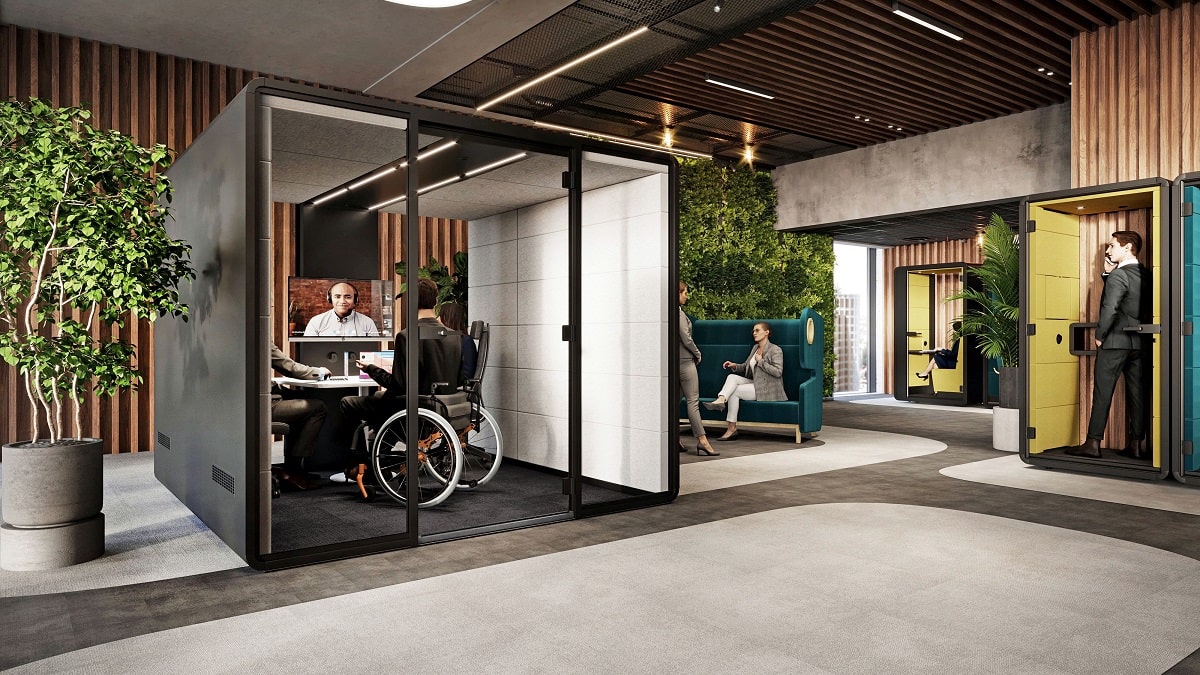
Acoustic pods are an improvement to all types of workspaces.
With pods and booths, you can make maximum use of your office space whether you follow an activity-based, hybrid, or open-plan layout.
In activity-based offices, self-contained spaces such as pods are a must.
While it’s true that activity-based workspaces enhance communication among team members and supervisors, boosting performance and inventiveness, the absence of closed spaces in the office may have a detrimental effect on concentration. With hushMeet, a 4-person closed working pod, the potential of activity-based workspaces can be fully realised.
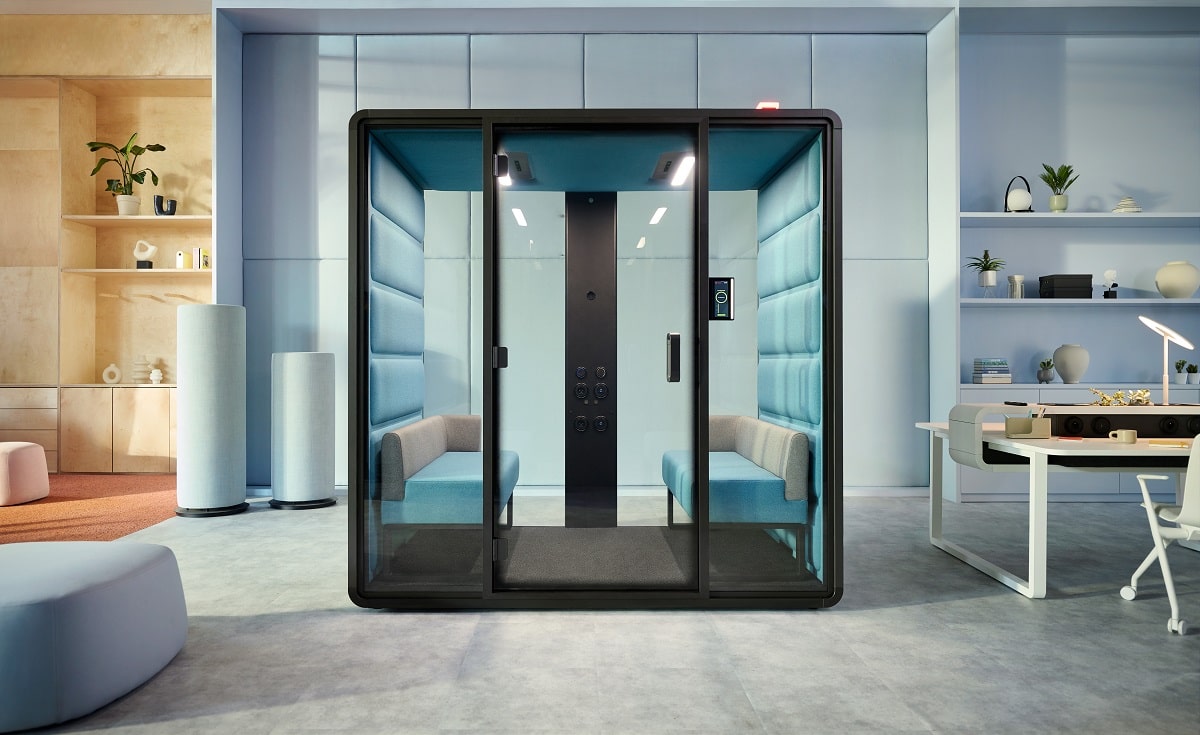
In hybrid workspaces, there is a need for dedicated video conferencing booths that foster connection among team members.
Nowadays, a lot of companies invest in enhancing their video call technology, including conferencing platforms, microphones, speakers, cameras, high-definition monitors, and room arrangements. HushHybrid – an all-encompassing, single-person video conferencing booth – is an excellent, premium solution for hybrid offices.
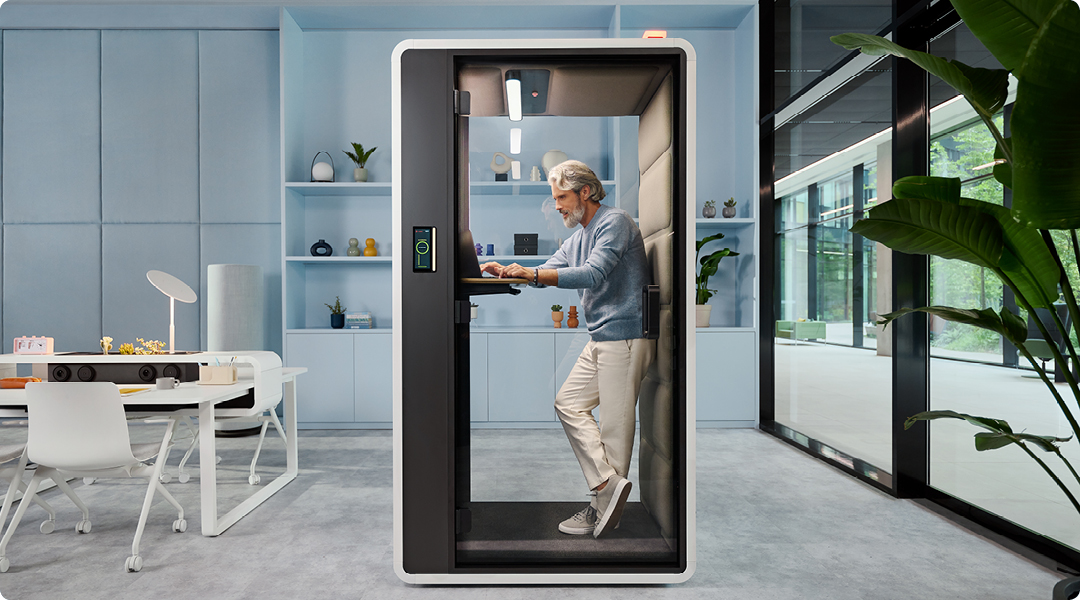
Open-plan workspaces need comfortable relaxation areas for periodic breaks.
73% of workers missed face-to-face interaction with their colleagues in the office. A similar percentage missed the clear work-life division facilitated by the physical office environment. HushAccess.L, a large office booth, is a multi-functional solution, providing enough space for relationship-building recreation while simultaneously bringing more harmony to the working environment.
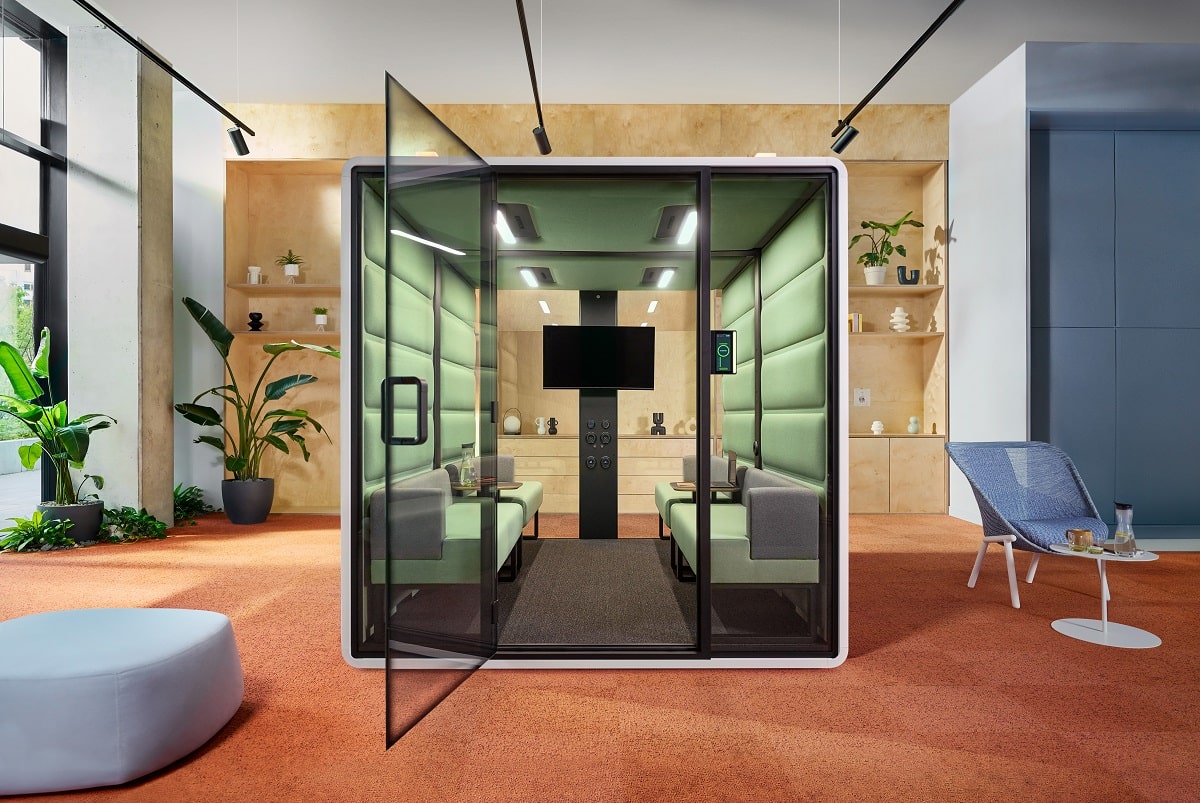
Find out more about our Hushoffice booths here.
Sensory overload is a result of an excessive number of stimuli that employees experience in their surroundings. In some contexts, one of the five senses can be overloaded, in others, multiple senses may be simultaneously affected. In this respect open workspaces are especially challenging for workers with ADHD, autism, PTSD or other conditions connected with the way employees respond to sensory stimuli. Thus, to create a universal, inclusive, and accessible working environment, you need to design your workspace with such groups in mind.
Prevalent sources of overstimulation in the workspace are: office noise, harsh lighting, heavy scents of perfume, cleaning products or food, excessive visual distractions, and disturbances in the surrounding area. However, it is office noise that is the most detrimental to employee well-being and cognitive functions.
The most effective way to reduce sensory overload is to offer your senses a break from overwhelming stimuli. Acoustic office pods address this issue by providing employees with private, calm, self-contained spaces to zone out and recharge.
Sensory overload at work – frequently asked questions
How can you solve the problem of sensory overload in the office?
First you need to offer your senses a break to reduce the amount of input they constantly process. Some useful tips might be to use sound-isolating earbuds that minimise noise distractions or blue light glasses that block fatiguing computer light. What’s more, discuss with your employer the possibility of installing desktop privacy screens, granting you more personal space, simultaneously ensuring visual privacy. Whenever possible, isolate in a private retreat such as a work pod, where you can simply dim the light and regain your balance.
What can you do to support your sensory-sensitive workers?
Employees who get overstimulated by their surroundings can benefit from more autonomy over their workspace. This can be achieved by providing them with desktop privacy panels, personal fans, or customisable lighting.
What can be done to minimise sensory overload in the workspace?
Whenever you feel completely overstimulated, it is a good idea to enter a secluded space for a moment. You can also use a few simple techniques to prevent overstimulation in the first place. Firstly, consider wearing a hat to cancel out flickering lights or visual distractions in the surrounding area. Secondly, if your main issue is background noise, use sound-isolating headphones. What’s more, it might be helpful to change your desk location to ensure more separation and focus during your work-related activities.
